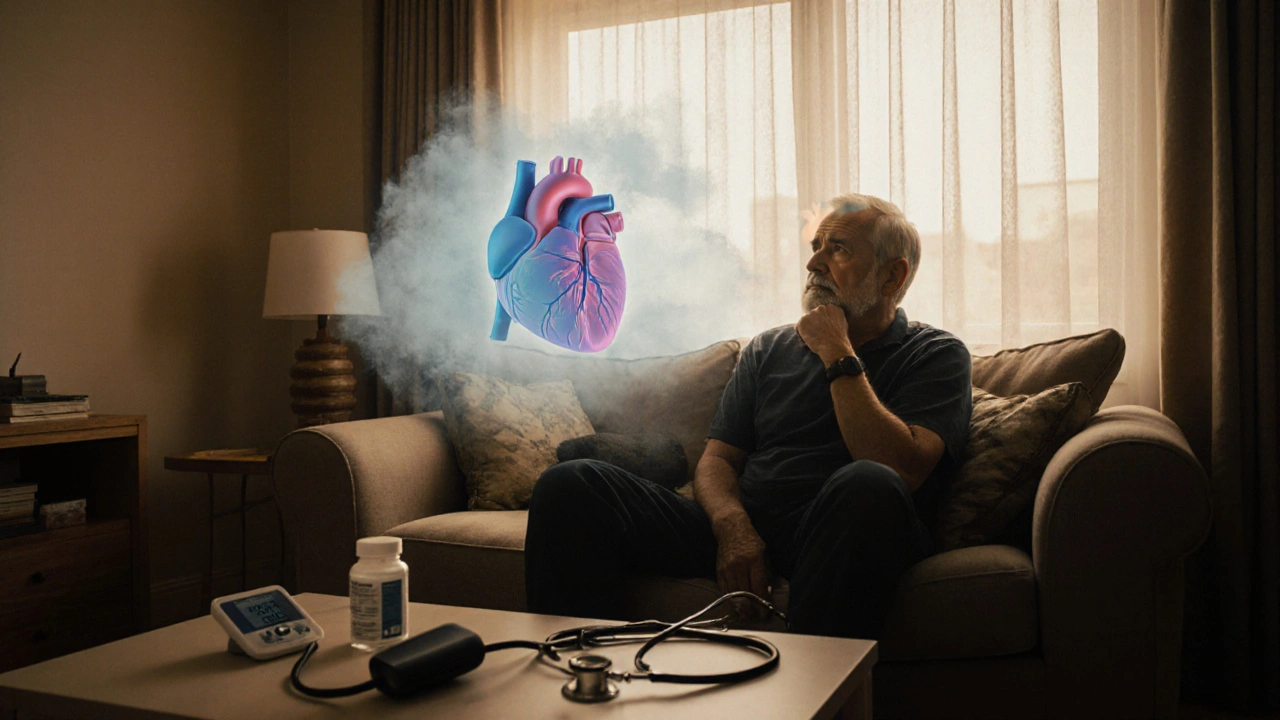Chronic Heart Failure – What It Is and How to Live With It
If your doctor ever mentioned "chronic heart failure" you might have imagined a terminal condition. In reality, many people live with heart failure for years by following a few practical steps. Think of the heart as a pump that’s starting to lose some of its strength. It still works, but it needs a bit of help to keep blood flowing the right way.
Spotting the Signs Early
The first clue is usually shortness of breath, especially when you climb stairs or lie down flat. You might notice swelling in your ankles or feet – that’s fluid building up because the heart can’t push it out fast enough. Fatigue and a lingering cough that produces frothy sputum are other red flags. If you experience any of these, don’t wait for them to get worse; a quick check‑up can confirm whether it’s heart failure or something else.
Doctors often measure something called ejection fraction with an ultrasound. It tells them how much blood the heart pushes out with each beat. An EF below 40% usually points to systolic heart failure, while a normal EF but persistent symptoms could mean diastolic failure. Knowing the type helps guide the right medicines.
Common Treatments and Why They Matter
Most patients end up on a combination of drugs. ACE inhibitors (like lisinopril) widen blood vessels, lowering the pressure the heart has to pump against. Beta‑blockers (such as carvedilol) slow the heart down a bit, giving it time to fill properly. Diuretics (furosemide is popular) flush excess fluid, easing swelling and breathlessness.
One medication that often shows up in the conversation is digoxin. Our site even has a guide on how to buy digoxin safely online. Digoxin can improve the heart’s pumping efficiency, especially in people with atrial fibrillation. However, it has a narrow safety margin, so regular blood tests are a must.
Beyond pills, lifestyle tweaks make a huge difference. Cutting down on salt, tracking your daily weight, and staying active with gentle walks can keep symptoms in check. If you gain more than two pounds in a day, it could signal fluid retention – call your doctor.
Sometimes, devices like a defibrillator or a cardiac resynchronization therapy (CRT) pump are recommended. They’re not for everyone, but for certain patients they reduce hospital visits and improve quality of life.
Living with chronic heart failure is a team effort. Keep a list of your medicines, know the dosage, and set reminders. Use a simple notebook or a phone app to log weight, blood pressure, and any new symptoms. Share this log with your cardiologist at each visit – it helps them fine‑tune your treatment.
Finally, mental health matters. Feeling limited can be frustrating, but joining a support group or talking to a counselor can lift your mood and keep you motivated to stick with the plan.
Bottom line: chronic heart failure isn’t a death sentence. With the right meds, a few daily habits, and regular check‑ins, you can stay active and enjoy life. If you suspect any of the symptoms listed, book an appointment soon. Early action beats emergency room trips every time.
How Chronic Heart Failure and Depression Influence Each Other
Explore the two‑way relationship between chronic heart failure and depression, its impact on outcomes, and practical ways to manage both conditions together.
Read more
